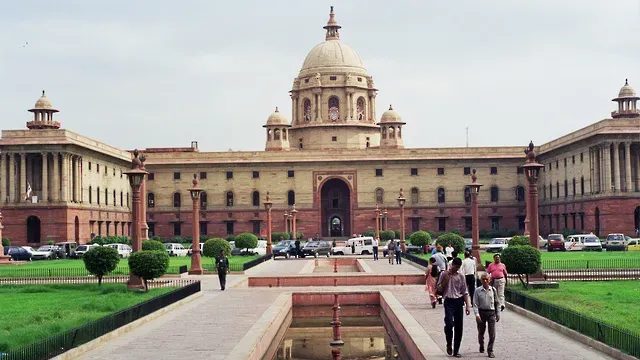Budget 2023: Does India’s $4.3bn transition pledge stand up to scrutiny?
Mixed messages leave Indians confused over the government's net zero intentions

Welcome to today’s edition of Lights On, a newsletter that brings you the key stories and exclusive intel on energy and climate change in South Asia.
Today, I take a look at India's new Union Budget and the controversies it spurred. Are India's plans climate or fossil fuel friendly?
A reminder that the easiest -and free - way you can support this newsletter's growth is by sharing it with your colleagues and inviting them to subscribe. You can share a link using the button below or forward this email directly. It takes a minute but it makes a big difference.
This week India’s finance minister made what appeared to be an impressive pledge of nearly $4.3bn in investment towards “net zero, energy transition and energy security objectives”, part of the Modi administration’s final Budget before the 2024 general election.
Yet a closer look at the details of the Budget reveals that roughly the same amount has been earmarked to support the petroleum industry, raising concerns that the lion’s share of the so-called “transition” pledge may in fact be spent to prop up India’s fossil fuel sector.
Of the additional INR 350 billion announced by the finance minister as part of India’s journey towards net-zero in 2070, nothing is allocated to sources such as solar and wind. Instead, 300 billion (just over $3.6 billion) will be used to support so-called “oil marketing companies”, the businesses at the end of the supply chain selling fuels to the consumer. Another INR 55 billion ($671.6 million) will be spent to enhance the country’s strategic oil resources.
“It needs to be clarified if the finance minister's announcement was referring to these budgets,” says Balasubramanian Viswanathan, a policy adviser with the International Institute for Sustainable Development (IISD), “because support for fossil fuels is not consistent with net-zero goals”.
But government sources told Lights On that after the brutal losses faced last year by the fossil fuel sector, the money is indeed meant to be a safeguard against gas price volatility, with the fuel being seen as a long term tool to reduce crude imports.
While “green growth” features as a pillar of this year’s budget agenda, the pledges reflect a more nuanced approach to the energy transition that is less incisive and at times more problematic when compared to the big promises India is known for globally.
Efforts to trigger a solar boom or put millions of electric cars on the road are already underway and continue to be supported. But the new tougher battle is to reduce the carbon intensity of an inescapably fossil-dependent economy.
Early stage tech
This year’s strategy is twofold: On the one hand, the government wants to boost the adoption of early stage clean tech, such as green hydrogen and batteries. At the same time, it is trying to progressively reduce the amount of fossil fuels entering the system, often as expensive imports.
While the Budget doesn’t allocate fresh resources to the National Green Hydrogen Mission, it reiterates the steep production target of 5 million metric tonnes (MMT) per year by 2030 for which it has already allocated INR 197 billion (about $2.4 billion).
Last year, India launched a Production Linked Incentive scheme to reward new manufacturers entering the nascent battery market. The new budget adds another tool to what’s shaping up as a convincing portfolio of incentives, including Viability Gap Funding, to help finance 4000 MWh of large scale battery capacity and integrate more renewables into the system.
In her speech, the finance minister also mentioned an upcoming framework for pumped storage, which will be detailed later this year. Only a mention for now, but the plan may well become the backbone of India’s large storage effort while the battery market catches up.
Moving energy
Rather than doubling down on new green energy installations, the Budget focuses more on transmission - perhaps the weakest point of India’s energy system. But while batteries will be a crucial part of this effort and the transition plan is robust, the government is also pledging INR 83 billion (~$1 billion) of direct support to an old idea that never took off, and with good reason.
The remote mountain region of Ladakh enjoys exceptional solar radiation, and for years plan after plan has promised to exploit its potential, only to fail due to the cost and logistical challenges of setting up new transmission lines in one of the most impervious areas of the country. The 207 billion ($2.5 billion) of total public-private investment promised in the budget would help shoulder much of the cost. But at a time when large infrastructure, along with climate change, is blamed for a crumbling Himalayas and the humanitarian tragedies this unleashes, the problem looks like one you can’t make go away by throwing money at it.
“At present it will be pure speculation on how net zero money would be distributed, since details about the Ladakh renewable expansion are yet to come,” says Namrata Ginoya, a senior energy and resilience expert with the non-profit WRI India. “We know that India needs to invest about $100 billion every year to achieve net zero which requires the government and private sector to double the current capex investments.” Due to the remoteness and fragile ecology of Ladakh, the cost may rise, and the government may try to balance this by loosening environmental safeguards. This, Ginoya says, “will reduce capital expenditure and operating expenses but it will have huge environmental impacts which will affect ecosystem services and local socio-economic development.”
Financing the energy transition and greenwashing exposure
A number of clean energy and clean mobility projects, including metro railways, will be financed through sovereign green bonds, the first tranche of which was launched last month. Lenders can invest their money in sustainable projects accepting a lower interest rate, known as ‘greenium’, for the privilege. The nature of this operation exposes investors to greenwashing, if the projects they end up funding turn out to be not as clean as advertised.
As international investors and the UN increasingly put a spotlight on greenwashing, India powers through with greening ideas that may or may not stand up to scrutiny. One such plan announced in the Budget is the Green Credit Programme, whereby companies and local bodies will be able to buy from a portfolio including forest and ecosystems, air quality, water quality and access and waste management credits.
But with scandal after scandal highlighting the systemic faults of forest-related offsets and more generally of the voluntary carbon market, India finds itself in a pickle. It’s too soon for its economy to impose industry wide carbon pricing, but to become credible enough for investors to take the plunge, these schemes will need to be made much more robust and transparent than they are at present.
That’s all for today! If you like what you read, please share this newsletter with a friend or two, and invite them to subscribe!



